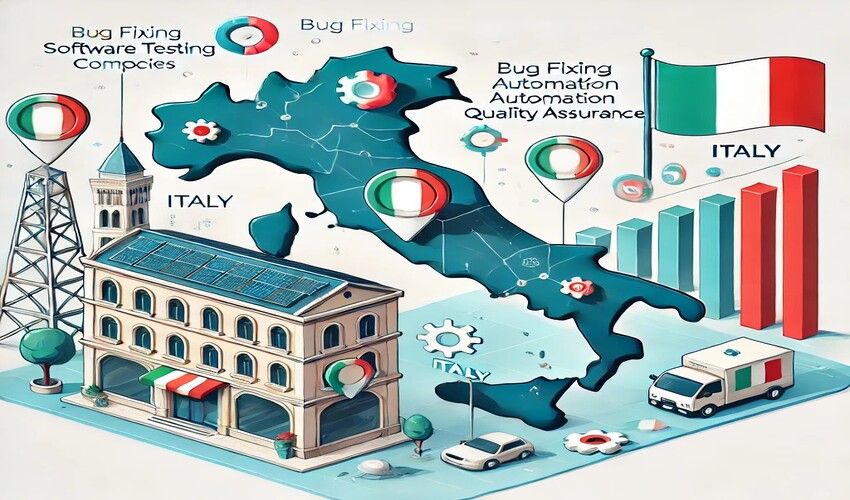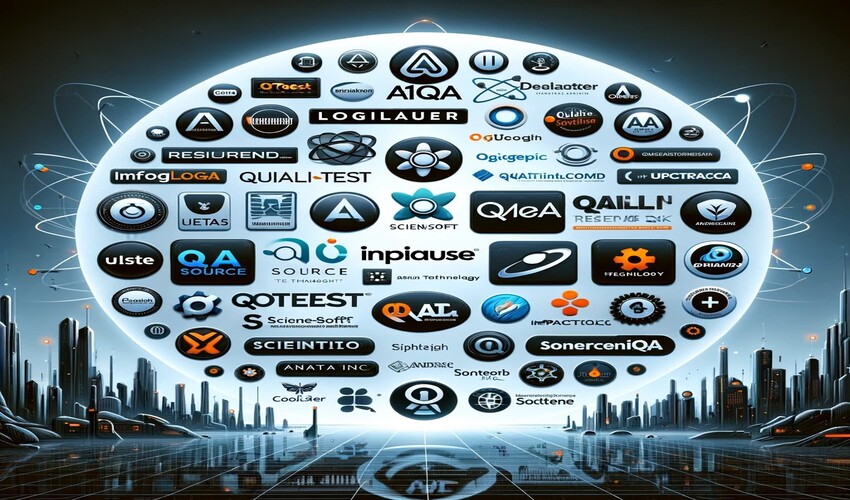Last updated on May 18th, 2024 at 06:37 pm
In an ever-changing technology sector, software development methodologies are essential for the efficient and successful management of projects. It is important to keep updated with the latest methods to help streamline the development process, increase productivity, and ensure the delivery of high-quality software products as we approach 2024.
Introduction
Staying at the forefront of software development in a rapidly developing world is essential, as we must compete. Choosing an appropriate development methodology can greatly influence the success of a project. In light of technological advancements and evolving customer needs, it is essential to incorporate novel approaches that promote collaboration, streamline operations, and provide added benefits to all parties involved.
In this post, we’ll discuss which are the best software development methodologies in 2024 and examine their key features, advantages, and drawbacks so that you can make your choice more easily.
Latest software development methodologies in 2024
Here, we listed the best software development methodologies in 2024.
1. Agile
Adapting and flexibility are key considerations in managing Agile Projects. This model is ideal for constantly evolving projects, as it emphasizes collaboration, iteration, and rapid feedback loops. Read about the phases of Agile development.
| Advantages | Disadvantages |
| Flexibility: Agile enables teams to respond quickly to changes and uncertainties, allowing for continuous feedback and adaptability across the project. Collaboration: Agile encourages communication and cooperation among team members, stakeholders, and customers, leading to a more cohesive and efficient working environment. Faster Delivery: The agile approach enables teams to provide customers with value more quickly and often by breaking up the project into bite-sized chunks or sprints. Customer Satisfaction: Agile prioritizes customer feedback and involvement, ensuring that the final product meets the needs and expectations of the end-users. Transparency: The agile approach enables a clear view of the project’s progress and ensures that stakeholders are kept up to date with developments, enabling them to make sound choices. | Learning Curve: Agile requires a shift in attitude and approach for team members who may be more accustomed to traditional project management methods. Lack of documentation: The emphasis on working software rather than complete documentation may hinder project documentation and knowledge transfer. Scope creep: if not managed effectively, the iterative nature of agile may lead to scope creep that could hurt timelines and budgets. Resource intensive: agile requires dedicated team members and ongoing collaboration, which may not be feasible for all projects or organizations. Risk of Overcommitment: Agile’s fast-paced nature can sometimes lead to excessive commitment or burnout among team members, which may affect productivity and motivation. |
2. Scrum
A subset of the Agile model, Scrum is a popular methodology that focuses on small, cross-functional teams working together in short, iterative cycles called sprints. This model enables teams to remain focused and motivated for the project’s duration. Read about phases of Scrum development
Advantages
- The Scrum can help teams to complete project deliverables in a timely and effective manner.
- The Scrum ensures that time and money are effectively used.
- The large projects are divided into manageable short bursts.
- During the sprint review, development shall be coded and tested.
- Works well for fast, ambitious development projects.
- Through scrum meetings, the team has a clear view of each other. Scrum, being
Disadvantage
- Due to the absence of a definite end date, the Scrum often leads to scope creep.
- Projects are at high risk of failing if individuals are not committed and cooperative. Adopting the Scrum framework in a big team is difficult.
- Only experienced team members can make the framework work. Some team members are frustrated at regular meetings.
- If any team member leaves during the project, it can have a huge negative impact.
3. Kanban
Kanban is a popular framework for implementing agile and DevOps Software Development Methodologies. The work must be communicated immediately, with complete transparency and capacity information. The tasks are visible on a Kanban board, allowing team members to always know the status of each task.
Advantages
Disadvantage
- Kanban lets users make real-time updates, changes, or patches in a project’s flow.
- Scrum has a spring schedule for updating the process and is more flexible.
- The deliverables are shipped as soon as they are developed
- As soon as the deliverables are developed, they will be sent.
- Kanban is based on the continuous delivery of project results.
- The roles and responsibilities of the project execution are not defined in any way.
- There’s no overhead for meetings or workshops to plan the sprints.
- Kanban’s got a consistent flow.
- Kanban allows you to limit the number of tasks at any given time, ensuring consistency in your workflows.
- Provides Quicker User Feedback
- There is a need for a clear explanation of the roles and responsibilities of certain projects.
- Due to the lack of a clear role, it is very difficult to manage collaboration between different team members, which may lead to unstable execution due to continuous change.
- Due to limitations in its planning, the Kanban method cannot cope with a greater number of project tasks.
- It is not suitable for projects based on timelines.
- Kanban’s difficult to define the targets of a sprint
4. Scrumban
A mixed methodology combining the structured framework of Scrum for project management with the flexibility and visualization of Kanban, making it suitable for projects that require frequent maintenance or rapid changes.
Advantages
- Scrumban combines the structure and predictability of Scrum with the flexibility and adaptability of Kanban.
- The result is a reduction in lead times due to addressing bottlenecks.
- It forces people to work at a moderate, sustainable pace and prevents interested parties from demanding excessively.
- Increased visibility for interested parties.
- This will increase visibility and make the process more fluid, allowing teams to work at a steady pace.
Disadvantages
- The Scrumban can be more complex than the Scrum or Kanban system alone.
- Scrumban can sometimes lead to confusion of roles and responsibilities, requiring a thorough understanding of both the methodologies and careful planning.
- It may be difficult to implement Scrumban, especially if team members do not know one or both of the underlying methods.
- Additional training and investment in resources may be needed to achieve this.
5. Lean
The project management model known as ‘lean’ emphasizes maximizing value and minimizing waste. The model encourages teams to improve processes and eliminate inefficiencies constantly.
Advantages
- Using only building space, equipment, supplies, and personnel is less costly.
- The key focus is on lean production. This requires removing dead or expired products and eliminating unnecessary space and human resources expenditures.
- It only meets the demands of a few special and loyal consumers on a schedule, which keeps the consumer happy and satisfied.
- It suggests that we can make progress towards the ideal. Raw materials will be bought and delivered when production requires them.
Disadvantages
- Because of the lack of flexibility, there is a high risk of missing the deadline; sometimes, even a second chance is not given.
- The labor or equipment deadlines are missed due to limited space, which may lead to delays in starting up.
- A lean approach may produce counterproductive outcomes.
- There’s very little room for error left by Lean.
6. Waterfall
The classic approach to project management, the waterfall model is a linear and sequential method that breaks down projects into distinct phases. It’s an ideal model for projects that meet the explicit requirements and have a specific end goal.
Advantage
- Understanding and using this model is simple. Because of its rigidity, each phase has deliverables and a review procedure.
- Processing and completion of these model phases take place at the same time.
- The phases don’t coincide with each other.
- The waterfall model is a good fit for small projects where requirements are clearly set and well understood.
Disadvantage
- Once the application is in the test phase, it’s very difficult to change something poorly thought through in the concept phase.
- During the life cycle, no working software will be produced before late.
- There is a great deal of risk and uncertainties.
- For complicated and object-oriented projects, it’s not a good model.
- A very bad model for lengthy and ongoing projects.
- It is not suited to projects where the requirements are at a low or very high risk of change.
7. Spiral
It is ideal for complex and high-risk projects to combine elements of both iterative and waterfall models with a focus on early identification and mitigation of risks.
Advantage
- At another stage, additional functions or changes can be performed.
- As the prototype building is built up in small sections, it’s easier to estimate costs.
- Risk management can be helped by constant or repeated development.
- In spiral development, it is faster, and features are added systematically. There’s still room for customer feedback,
Disadvantage
- There is a risk of being unable to meet the schedule or budget.
- The best way to develop a spiral is by requiring expertise in risk assessment, but it’s also necessary for large projects.
- There is more documentation as it goes through a transitional stage. Spiral software development is not recommended for a small project; it could be costly.
8. Prototypes
A prototype is like a first draft of a product that gets fine-tuned in later versions. Engineers and designers often make prototypes of new things before they’re officially out there.
Advantage
- In the design, this model can change.
- Errors are easy to spot. It’s easy to spot the lack of functionality.
- There’s scope for improvement, which means new requirements can be easily addressed.
- In the future, a developer can use it for more complex projects.
- This guarantees a higher level of satisfaction and comfort for customers.
- It’s ideal for the online system.
- At the development stage, it may involve users on an active basis.
- The integration requirements are well understood, and deployment options have been selected at a very rapid stage.
Disadvantage
- It’s expensive to do this model.
- Due to the constant change in customer requirements, it does not have sufficient documentation.
- The requirements can vary too much. In some cases, customers demand that the product be delivered as soon as possible.
- After seeing the initial prototype, customers may not be satisfied or interested in a product.
- There is a certain degree of certainty in determining the number of iterations.
- The analysis of problems may not be complete or inadequate. The complexity of the system may be increased.
9. Rapid Application Development (RAD)
Rapid application development, or RAD, is an adaptive model of Software Development Methodologies based on prototyping and fast feedback with less focus on specific plans. Generally speaking, the RAD approach focuses on developing and building prototypes rather than designing them.
Advantage
- Cut back on the time it takes to develop.
- It facilitates customer feedback and ensures that the final product satisfies all stakeholders.
- It allows you to integrate from the beginning.
- We’re experiencing a rapid first review.
- Improve the ability of components to be reused.
- Improves risk management for the end product.
Disadvantage
- It depends on a highly skilled team of developers and designers.
- It can only build modularized projects.
- It can’t be used for low prices because it requires a strong team and individuals to deliver.
- Only projects that require rapidity can use it.
- Due to a large number of stakeholders, this is difficult to deal with.
- Requires a strong team
10. Extreme Programming (XP)
Focuses on customer satisfaction through frequent delivery of functional software, encouraging regular adaptation to changing client requirements.
Advantage
- There is a visible and accountable process in XP.
- Developers are committed to what they’re going to achieve and demonstrate progress.
- The strong side is also constant feedback.
- Listen and make the necessary changes in time.
- With regular testing at the development stage, XP helps to create software more quickly.
- allows software development companies to save costs and time required for project realization
Disadvantage
- This methodology’s lack of code quality assurance measurement is an additional disadvantage for XP.
- This may damage the initial code. If programmers are scattered geographically, XP isn’t the best option.
- Extreme programming focuses more on the code than on the design. It could be a problem because good design is very crucial to software applications
11. DevOps
DevOps is a combination of cultural philosophies, practices and tools that enables organizations to deliver applications and services at high velocity: rapidly developing and improving products faster than traditional Software Development Methodologies or infrastructure management processes.
Advantage
- Collaboration and communication make it easier for teams to communicate more effectively.
- The rapid deployment of software is due to the simplification and automation of multiple processes by teams.
- Due to continuous delivery, continuous improvement, and continuous development, early detection of bugs occurs in DevOps.
- With DevOps, operational costs are reduced due to the automation of administrative tasks.
- Collaboration with global experts will be more likely.
Disadvantage
- Toolchain complexity.
- Vulnerabilities and breaches can occur since the security team still works in silos.
- Investing in tools and training that are needed for complexity may be expensive.
- Dependency on automation can be detrimental. Implementing Role-Based Access Control (RBAC) is often not applied, so access isn’t specified.
- Periodic permission audits aren’t implemented, and deep checks are lacking on who has permission.
12. Crystal
Crystal is a family of Software Development Methodologies that aim to improve efficiency and reduce the workload of software development processes. These methods prioritize individuals and interactions, adapting processes to the project’s particular characteristics, thus limiting red tape.
Advantage
- The crystal method is flexible and can adapt to project type, size of team, and requirements for projects.
- Priority shall be given to delivering the project’s critical and important parts.
- There may also be a minimum of ten team members in this project.
- This method facilitates efficient team communication and helps to foster a culture of learning between the members.
Disadvantage
- The principles applied may vary according to the size of the team and the project, making it difficult to understand.
- It requires constant communication, so projects with some working areas may not work well.
- Planning and development are not dependent on the requirement; it is difficult to shift from one approach to another in the middle of the project.
13. Six Sigman
Six Sigma is a data-based project management approach focusing on defect reduction and quality improvement. This model is a good fit for teams that want to streamline processes and deliver high-quality results.
Advantage
- A significant improvement in the quality of products and services can be made by incorporating Six Sigma.
- By identifying and eliminating waste and inefficiency, process optimization is promoted.
- By making decisions based on data, minimize the risk of errors or bias in judgment.
- Increased customer satisfaction.
- Six Sigma provides organizations with cost savings through eliminating defects, waste reduction, and process optimization.
- Engagement of employees and development of their skills
Disadvantage
- Six Sigma requires a significant investment in time and resources.
- Six Sigma is an exhaustive and technical methodology requiring a deep understanding of statistics analysis and problem-solving techniques.
- Change management will be essential in overcoming resistance and ensuring the smooth implementation of Six Sigma across the organization.
- Lack of flexibility.
- Six Sigma often uses the expertise of trained professionals known as Black Belts and Green Belts.
14. Critical Path Method (CPM)
CPM is a project scheduling technique that identifies the critical path, i.e. the sequence of tasks determining the duration of projects. The model enables teams to prioritize tasks and remain on schedule for meeting deadlines.
Advantage
- It will include all stakeholders’ knowledge.
- Better work prioritization.
- Greater accuracy.
- It helps to identify problems in advance.
- It makes it easier to adapt your schedule.
Disadvantage
- Complex
- It’s only useful for certain types of projects.
- It will make seeing problems in areas other than critical tasks more difficult.
- Resource constraints are not taken into consideration. Steep learning curve.
- Resource intensive.
15. Dynamic Systems Development Method
An agile approach emphasizing continuous user involvement and iterative development is suitable for rapid deployment.
Advantage
- Basic product functionality can be delivered rapidly
- Developers have easy access to end-users
- Projects are reliably completed on time
Disadvantage
- There could be a major and disturbing change in the company culture.
- Costly to implement
- It’s not perfect for small organizations
16. Feature-Driven Development (FDD)
Works well for larger teams and projects, focusing on delivering tangible features through regular and planned iterations.
Advantage
- The FDD encourages collaboration between team members and breaks the development process into easier tasks.
- FDD makes it easier for teams to create new features and functionality by focusing on small improvements that make a difference in the short term.
- The structured approach of the FDD ensures that team members are fully aware of project objectives and requirements.
Disadvantage
- The FDD needs substantial upfront planning and modeling, which can take considerable time.
- Compared to other agile methodologies, FDD can be less flexible when it comes to changing requirements due to its structured approach.
- Focusing on features is generally beneficial for FDD, but adapting to changing requirements can sometimes be difficult.
17. Scaled Agile Framework (SAFe)
SAFe offers a way to scale agile methodology to a larger enterprise by using a combination of existing agile and lean practices. It aims to provide flexibility and help manage some of the challenges faced by larger organizations in the field of agile practice.
Advantage
- SAFe provides the most value when cross-functional teams need to work together.
- Program Increment planning is the framework’s method of clarifying the vision of what the program needs.
- Extending agile practices to capture what is most important to the business will allow the industry to take over the process of reassessing priorities.
Disadvantage
- Initially, SAFe was intended to be used exclusively by big organizations to help them deal with complicated projects.
- The impact of adopting agile practices on businesses is often too expensive.
- With SAFe, many new terminologies will take time for teams to understand and adopt.
18. Joint Application Development
JADP This methodology involves collaborative sessions between clients, users, and developers to define and review the requirements of a project in real-time.
Advantage
- JAD gives you the ability to solve your problems more easily and produce software that is errorless.
- All risks are reduced by collaboration between the company and its clients.
- The JAD will reduce the cost and time.
- Progress has been faster because of the tight communication.
- JAD encourages the team to push each other to work faster and deliver on time
Disadvantage
- It’s hard to set goals and keep focus because of the different opinions on the team.
- JAD may require a significant commitment of time, depending on the size of the project.
19. Rapid iteration process
RIP stands for “rapid iteration process.” It’s a methodology framework for software development that focuses on a disciplined approach to project management through different stages of development.
Advantage
- Potential defects are identified and addressed as soon as possible.
- During the project life cycle, functional prototypes are developed at an early stage
- . It takes less time to document and more time to design. It’s easy to measure progress. The small size of the modules makes it easy to test.
- During the evolution phase, most risks can be identified and higher risks can be addressed at an early stage.
- As milestones, success iterations can be easily managed.
- An operational product is delivered with every iteration.
- Less Operational cost.
Disadvantage
- There may be a need for further resources. Each successive phase is rigid with no overlaps.
- There may be a need for more intensive project management.
- In view of the lack of a complete requirement specification for the whole system, it may be considered as a barrier to systems architecture.
- The end date of the project may be difficult to specify. Risk analysis requires the highest level of expertise.
20. Large Scale Scrum (LeSS)
LeSS, an extension of Scrum, aims to scale Scrum for bigger teams by incorporating key principles such as decentralization of decision-making, transparency, and iterative progress at a larger scale.
Advantage
- Implementing the practices already used by the teams in the scrum will reduce the cost of implementation.
- One product owner with knowledge of the framework and principles bridges the gap between business and technical teams.
- Fewer people are needed to deliver a product. Adding more roles and overhead does not exponentially increase LeSS.
- Within the area of focus, it presents a complete product overview.
- Teams shall be directly in contact with the client and business stakeholders.
Disadvantage
- It’s hard to scale.
- Implementing LeSS will be more difficult if your company or team does not know how to use the Scrum gestures and goals.
- Applying the Le SS method efficiently without extensive training in your company may be much more difficult.
- If you have used other methodologies and frameworks for project management or product development over the past. They may be difficult to work with, manage and assist a wide range of teams.
21. Hybrid model
Consider creating a hybrid model combining elements from different methodologies if none of the above models fully meet your project requirements. This model will allow you to configure your approach to meet the specific project requirements.
Advantage
- Improves both productivity and effectiveness.
- Cost of real estate and office equipment is reduced.
- By reducing the cost of commuting, this will also help save money for workers.
- With the adoption of new technology tools, they are able to communicate and collaborate from anywhere in the world
- . It enables people to focus on their own personal or career objectives at once.
Disadvantage
- High cybersecurity risks
- It can be difficult to establish or maintain relations with your colleagues in a hybrid workplace.
- Remote workers can be working longer hours and taking shorter breaks.
- Hybrid working can lead to a misalignment or poor communication between employees who are working in the office and those working remotely.
Conclusion
As we move towards 2024, Software Development Methodologies are set for further innovation and growth. By adopting the most advanced methodologies described in this article, teams can improve collaboration, increase productivity, and deliver high-quality software products that meet client needs.
To succeed in the dynamic world of software development, you must be flexible, open to changes, and continuously improve with your choice of agile, DevOps, Scrum, Kanban, Lean, or other methods. In 2024 and beyond, stay ahead of the curve, embrace new methodologies, and watch your projects thrive.
Which are the best Software Development Methodologies in 2024?
Your project’s specific requirements and goals will ultimately determine the best Software Development Methodologies in 2024. A few of the many methodologies available to software development teams, each with its own strengths and weaknesses, are Agile, Scrum, DevOps, waterfall, RAD, lean, XP, spiral, or other Software Development Methodologies. You can choose a methodology that best suits your team and help you bring quality software to the market in years to come, based on carefully considering each project’s particular needs.

















Leave a Reply